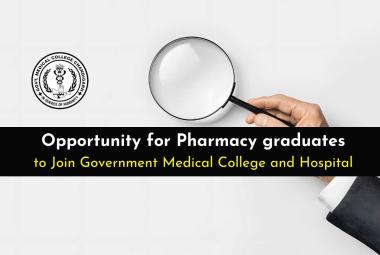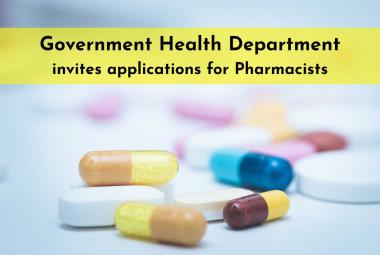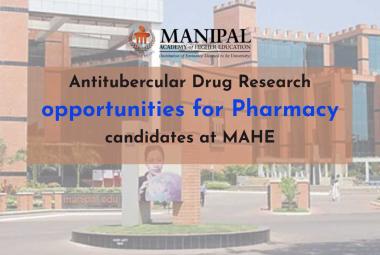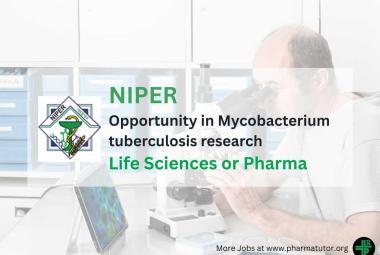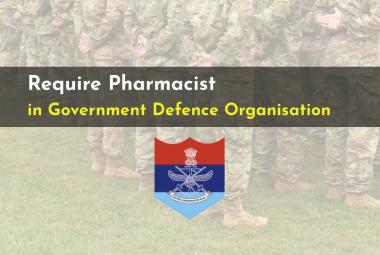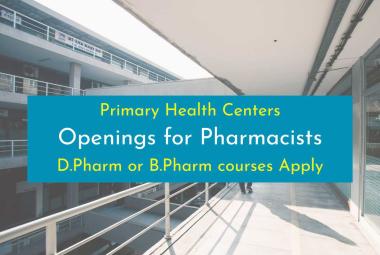{ DOWNLOAD AS PDF }
ABOUT AUTHOR
Steffi Jerry Mammen
Inamdar Multispeciality Hospital,
Pune, Maharashtra
ABSTRACT:
Purpose: To study the adverse drug reactions (ADR’s) reported from wards and critical units in a tertiary care hospital of Pune. The adverse drug reactions were analyzed by Naranjo’s algorithm scale and Hartwig severity assessment scale and the outcomes were studied.
Methods: This observational and cross-sectional study was conducted for 6months from November 2016-May 2017 in an inpatient setting of a tertiary care hospital of Pune. The data collection was done only in wards and critical units. Patients of all age groups and either sex were included in this study. The adverse drug reactions were assessed for their causality and severity by performing the Naranjo’s algorithm scale and Hartwig’s scale respectively. The outcomes were studied. Data analysis was done by descriptive statistics.
Result: Total 50 adverse drug reactions were reported from wards and critical units. 21-30 years age group was reported to have more adverse drug reactions. The most commonly affected organ is the Skin 32 (71.11%), followed by Respiratory system 3 (6.66%) and nervous system 3 (6.66%). Vancomycin 5 (20%) was the drug having majority of the ADR’s. The commonly reported ADR in this study was rash and itching 29 (64.44%). According to Naranjo’s algorithm scale, 23 (51.11%) suspected ADR’s were probable, 17 (37.77%) ADR’s were possible and 5(11.11%) were definite. As per Hartwig’s severity assessment scale, majority of the ADR’s were mild 21 (46.66%), followed by moderate 20 (44.44%) and severe 4 (8.88%). The outcome of the ADR’s was all recovered 38 (84.44%) during the study period.
Limitations: Study was conducted only in wards and critical units not in all departments of the hospital. Some of the ADR’s have gone un-reported by Resident Medical Officer (RMO) due to increased work pressure, lack of awareness or busy environment.
[adsense:336x280:8701650588]
Reference Id: PHARMATUTOR-ART-2603
|
PharmaTutor (Print-ISSN: 2394 - 6679; e-ISSN: 2347 - 7881) Volume 6, Issue 8 Received On: 28/06/2018; Accepted On: 23/07/2018; Published On: 01/08/2018 How to cite this article: Mammen, S.J. 2018. A Study of Adverse Drug Reactions in a Tertiary care Hospital of Pune. PharmaTutor. 6, 8 (Aug. 2018), 38-43. DOI:https://doi.org/10.29161/PT.v6.i8.2018.38 |
INTRODUCTION:
Drugs have primarily used for diagnosis, prevention, treatment of various diseases and to alleviate pain. But it is sometimes observed, that these drugs have been proved fatal. This could be due to variable person-to-person response towards a drug. Even at therapeutic doses, people develop adverse effects.
World health organization (WHO) defines an adverse drug reaction (ADR),” As a response to a drug which is noxious and unintended and which occurs at doses normally used in man for prophylaxis, diagnosis or therapy of disease or for the modification of physiological function” . According to epidemiological studies, ADR’s account to 5% of hospital admissions and occur in 10-20% of hospitalized patients. It is the 7th leading cause of death. ADR’s are a leading cause of morbidity and mortality in many countries. It is a great concern for public, medical professionals, pharmaceutical industry and regulatory authorities.
India is a country which has supported the WHO program for global monitoring of ADR’s that wholly depends on spontaneous reporting. Spontaneous reporting is a very cost effective and affordable system which can identify rare adverse reactions and generate early signals for new drugs. Because of this reporting system, many drugs are recalled from the market due to safety concerns. The concept of ADR reporting is very new in India and the reporting done is also rare. If proper awareness among health care professionals is provided, it can contribute to drug safety and better patient care. Hence, this study was conducted to identify, analyze the various ADR’s in a clinical setting and study their outcomes.
Review of literature:
Prakash .H. Bhabhor et al (2014) did a study on adverse drug reactions in a tertiary care teaching hospital in India: analysis of spontaneously reported cases. They reported that the most commonly implicated organ system was skin and appendages (52.25%). The major causative drug classes were antimicrobials (40.28%), central nervous system (23.61%) and autacoids (15.97%). Cohort study is recommended to confirm the risk factors of serious ADRs in Indian population
Ratan J. Lihite et al (2016) conducted a study on adverse drug reactions in a tertiary care hospital of northeast India in which the topical steroid (betamethasone sodium phosphate) was reported to induce adverse drug reactions in majority of the patients. The commonly reported reaction was acne.
Lateef M. Khan et al (2012) performed a study on adverse drug reactions in hospitalized pediatric patients of Saudi Arabian University hospital and impact of pharmacovigilance in reporting ADR. They reported that ADR was more in patients who received 5–6 drugs. Regarding age, it was the highest in patients of 0–1 year of age (40.7%). Anti-infective agents (40.8%) were the most frequently involved in ADR. This study also demonstrated that, there was high susceptibility of the skin (37%) to the ADR.
R. Arulmani et al (2007) conducted a study on adverse drug reaction monitoring in secondary care hospital in south India. They reported that, about two thirds of the reactions (102, 62.2%) were classified as probable. The majority of the reactions (88, 53.7%) were mild. Most patients (119, 72.6%) recovered from the incidence. The majority of the reactions were of type H (100,61%) which indicates, that they were not predictable and not potentially preventable. An average cost of 481 rupees was spent on each patient to manage ADRs.
Jacoline C. Bouvy et al (2015) did a study on Epidemiology of adverse drug reactions in Europe: A review of Recent Observational studies. They concluded that the median percentage of hospital admissions due to an ADR was 3.5 %, based on 22 studies, and the median percentage of patients who experienced an ADR during hospitalization was 10.1 %, based on 13 studies. These results indicate that the occurrence of ADRs in the European hospital setting—both ADRs that result in hospitalization and ADRs that occur during the hospital stay—are significant.
Raut Aswari et al (2011) conducted a study on incidence, severity and financial burden associated with adverse drug reactions in medicine inpatients and concluded that Gastrointestinal system (25.87%) was most commonly involved. Drug class most commonly associated was Antimicrobials (18.90%). 43.36% ADRs were classified as “Possible” in view of causality, while 62.24% were found to be “mild” in case of severity. Most patients (59.44%) recovered from the ADR. 68.53% ADRs were augmented or type A. Average cost incurred in treating an ADR was found to be Rs.412.79 (US$ 9.30) in India.
Objective:
1. To study the adverse drug reactions reported from wards and critical units in a tertiary care hospital of Pune.
2. To analyze the adverse drug reactions by Naranjo’s algorithm scale and Hartwig severity assessment scale and determine the outcome.
Methodology:
This observational and cross-sectional study was conducted for 6months from November 2016-May 2017 in an inpatient setting of a tertiary care hospital in Pune. The data collection was done only in wards and critical units. Patients of all age groups and either sex were included in this study. The Adverse drug reaction form filled by Resident Medical Officer was considered. The documentation of the adverse drug reaction form was maintained by the clinical pharmacist for evaluation and further study. The adverse drug reactions were assessed for their causality and severity by performing the Naranjo’s algorithm scale and Hartwig’s scale respectively. The outcomes were studied. Data analysis was done by descriptive statistics.
Exclusion criteria: Known allergies or previous history given by patients regarding drug allergies are excluded from this study. OPD patients are also excluded. The use of alternative system of medicines such as Ayurveda, Homeopathy, Unani etc as well as over dosage, excess consumption, was excluded. Patients who are mentally retarded, drug addicted, suicidal tendencies or consumption of a drug in the influence of alcohol was also excluded.
Statistics:
Description statistics were used for data analysis.
Results and discussion:
In this study, 50patients were reported to experience an ADR during the study. 5 ADR cases were discarded as more than one suspected drug was documented. Out of 45patients, 24 (53.33%) were females and 21 (46.66%) were males. The median age of the patients was 25. The youngest patient was 9months and the oldest was of 84years. Majority of the patients experiencing an ADR were belonging in the age group of 21-30years (Table 1).
|
Sr.No |
Males |
Females |
Age Range |
Total no of patients (%) |
|
1 |
4 |
1 |
<1-10 |
5 (11.11%) |
|
2 |
5 |
1 |
11-20 |
6 (13.33%) |
|
3 |
2 |
11 |
21-30 |
13 (28.88%) |
|
4 |
2 |
3 |
31-40 |
5 (11.11%) |
|
5 |
0 |
2 |
41-50 |
2 (4.44%) |
|
6 |
4 |
2 |
51-60 |
6 (13.33%) |
|
7 |
4 |
4 |
<61 |
8 (17.77%) |
|
Total |
21 |
24 |
|
45 |
Table-1
|
Route of Drug administration |
||
|
Sr.No |
Route |
Total (%) |
|
1 |
Oral |
5 (11.11%) |
|
2 |
Intravenous |
30 (66.66%) |
|
3 |
Subcutaneous |
3 (6.66%) |
|
4 |
Intra-vaginal |
2 (4.44%) |
|
5 |
Topical |
4 (8.88%) |
|
6 |
Intra-muscular |
1(2.22%) |
|
Total |
|
45 |
Table-2
It was also found that, the most common route of administration for suspected drugs was Intravenous 30 (66.66%), followed by oral 5(11.11%) and then topical 4 (8.88%)(Table-2). As shown in the (Table-3) the most commonly affected organ is the Skin 32 (71.11%), followed by Respiratory system 3 (6.66%) and nervous system 3 (6.66%).
|
Organ system affected by ADR |
||
|
Sr.No |
Organ system |
No. of ADR (%) |
|
1 |
Skin |
32 (71.11%) |
|
2 |
Respiratory |
3 (6.66%) |
|
3 |
Musculoskeletal |
1(2.22%) |
|
4 |
Nervous |
3(2.22%) |
|
5 |
Digestive |
1(2.22%) |
|
6 |
Genitourinary |
1(2.22%) |
|
7 |
Other |
4 (8.88%) |
|
8 |
Total |
45 |
Table-3
|
Drug Class |
||
|
Sr.No. |
Category of drug |
No.of ADR’s (%) |
|
1. |
Antimicrobials |
22 (48.88%) |
|
2. |
NSAID’s |
5 (11.11%) |
|
3. |
Proton pump inhibitors |
4 (8.88%) |
|
4. |
Vitamins/minerals |
4 (8.88%) |
|
5. |
Other |
4 (8.88%) |
|
6. |
Cardiovasculars |
3(6.66%) |
|
7. |
Anti-emetic |
2(4.44%) |
|
8. |
Steroid |
1(2.22%) |
Table-4
The drug class most commonly associated with ADR’s was Antimicrobials 22 (48.88%), followed by NSAID’s 5 (11.11%) (Table-4). Vancomycin 5 (20%) was the drug having majority of the ADR’s. The commonly reported ADR in this study was rash and itching 29 (64.44%).
According to Naranjo’s algorithm scale, 23 (51.11%) suspected ADR’s were probable, 17 (37.77%) ADR’s were possible and 5(11.11%) were definite (Table-5, 6). As per Hartwig’s severity assessment scale, majority of the ADR’s were mild 21 (46.66%), followed by moderate 20(44.44%) and severe 4 (8.88%) (Table7, 8). The outcome of the ADR’s was all recovered 38 (84.44%) during the study period (Table-9).
NOW YOU CAN ALSO PUBLISH YOUR ARTICLE ONLINE.
SUBMIT YOUR ARTICLE/PROJECT AT editor-in-chief@pharmatutor.org
Subscribe to Pharmatutor Alerts by Email
FIND OUT MORE ARTICLES AT OUR DATABASE
Naranjo’s algorithm scale for causality assessment of ADR:
|
|
Question |
Yes |
No |
Don’t know |
|
1. |
Are there previous conclusive reports on this reaction |
+1 |
0 |
0 |
|
2. |
Did the adverse event appear after the suspected drug was administered? |
+2 |
-1 |
0 |
|
3. |
Did the adverse reaction improve when the drug was discontinued or a specific antagonist was administered? |
+1 |
0 |
0 |
|
4. |
Did the adverse event reappear when the drug was re-administered? |
+2 |
-1 |
0 |
|
5. |
Are there alternative causes (other than drug) that could on their own have caused the reaction? |
-1 |
+2 |
0 |
|
6. |
Did the reaction re-appear when a placebo was given? |
-1 |
+1 |
0 |
|
7. |
Was the drug detected in blood (or other fluids) in concentration known to be toxic? |
+1 |
0 |
0 |
|
8. |
Was the reaction more severe when the dose was increased or less severe when the dose was decreased? |
+1 |
0 |
0 |
|
9. |
Did the patient have a similar reaction to the same or similar drugs in any previous exposure? |
+1 |
0 |
0 |
|
10.
|
Was the adverse event confirmed by any objective evidence? |
+1 |
0 |
0 |
Table-5
|
Naranjo’s Causality Assessment score. |
My score (%) |
|
|
Definite |
>9 |
5 (11.11%) |
|
Probable |
5-8 |
23 (51.11%) |
|
Possible |
1-4 |
17 (37.77%) |
|
Doubtful |
0 |
0 |
Table-6
|
Hartwig’s severity assessment scale |
|
Mild reactions which were self limiting and able to resolve over time without treatment and did not contribute to prolongation of length of stay. |
|
Moderate ADR’s were defined as those that required therapeutic intervention and hospitalization prolonged by 1 day but resolved in <24hrs or change in drug therapy or specific treatment to prevent a further outcome |
|
Severe ADR’s were those that were life threatening, producing disability and those that prolonged hospital stay or led to hospitalization, required intensive medical care or led to the death of the patient. |
Table-7
|
My score |
|
|
Mild |
21(46.66%) |
|
Moderate |
20 (44.44%) |
|
Severe |
4 (8.88%) |
Table-8
Outcome:
|
Recovered |
38 (84.44%) |
|
Continuing |
3 (6.66%) |
|
Recovering |
4 (8.88%) |
|
Unknown |
0 |
|
Fatal |
0 |
Table-9
Suspected drugs with ADR
|
Sr.No. |
Suspected drug |
No. of ADR |
Description of an ADR |
|
1
|
Vancomycin |
5 |
Rash and itching (5) |
|
2. |
Ceftriazone |
3 |
Urticaria Rash and itching (2) |
|
3. |
Ranitidine |
3 |
Palpitation Rash and itching (2) |
|
4. |
Povidone Iodine |
3 |
Severe burning in vagina Rash and itching (1) Vomiting |
|
5. |
Diclofenac |
3 |
Rash and itching (1) Breathlessness Giddiness |
|
6. |
Ferric Carboxymaltose |
2 |
Rash and itching (2)
|
|
7. |
Piperacillin+Tazobactum |
2 |
Rash and itching (2)
|
|
8. |
Polymixin-B |
2 |
Dizziness Rash and itching (1) |
|
9. |
Amiodarone |
2 |
Phlebitis Rash and itching (1) |
|
10. |
Tramadol |
2 |
Rash and itching (1) Restlessness, |
|
11. |
Amphotericin B |
1 |
Rash and itching (1)
|
|
12. |
Cefotaxim |
2 |
Urticaria Rash and itching (1) |
|
13. |
Cefixime |
1 |
Rash and itching (1) |
|
14. |
Orofer FCM MVI (Multivitamin) |
2 |
Tingling sensation at injection site Rash and itching (1) |
|
15. |
Colistimethate Sodium |
1 |
Numbness over face and upper lips, breathing difficulty
|
|
16. |
Ciprofloxacin |
2 |
Rash and itching (1) Swelling of lips
|
|
17. |
Hydrocortisone |
1 |
Rash and itching (1) |
|
18. |
Drotaverine |
1 |
Rash and itching (1)
|
|
19. |
Omeprazole |
1 |
Reddish discoloration on injection site, rash and itching (1)
|
|
20. |
Levofloxacin |
2 |
Tachycardia, Tachypnoea(1) Breathlessness (1) |
|
21. |
Antithymocyte immunoglobulins |
1 |
Rash and itching (1) |
|
22. |
Terlipressin acetate |
1 |
Skin necrosis |
|
23 |
Ondansetron |
2 |
Rash and itching (1) Rash and no itching (1) |
Table 10
NOW YOU CAN ALSO PUBLISH YOUR ARTICLE ONLINE.
SUBMIT YOUR ARTICLE/PROJECT AT editor-in-chief@pharmatutor.org
Subscribe to Pharmatutor Alerts by Email
FIND OUT MORE ARTICLES AT OUR DATABASE
CONCLUSION:
Adverse drug reactions is a drug related problem and if proper monitoring is done, it can contribute to drug safety. Rational use of antibiotics can help reduce the occurrence of ADR’s to a great extent.
In this study, 25 suspected drugs were reported to induce ADRs. After an ADR, the drug was withdrawn and rechallenge was not performed in any patient. Majority of ADRs experienced was, more in females than in males.
This study mainly focused on ADRs admitted as Inpatients in wards and critical units. The most common route of administration was intravenous. ADR’s were more in Antimicrobials, followed by NSAID’s, and Vancomycin was the drug having majority of the ADR’s. The commonly reported ADR in this study was rash and itching. Majority of the ADR’s in this study were mild in nature and mostly all recovered during the study period.
There is a need for more of spontaneous reporting by all health care professionals working in various departments in a tertiary care hospital. After an ADR occurrence, patient counseling in mandatory so that the patient is aware about it and can avoid further exposure to the drug in future. This can also help in reducing the length of stay of patients and also can be cost effective. The active involvement of clinical pharmacist to capture ADR’s and awareness given via training to other health care professionals can help change the scenario in under-reported hospitals.
REFERENCES:
1. Asawari Raut, Arundati Diwan, Chitan Patel, Palak Patel, Atmaram Pawar (2011) ; Incidence, Severity and financial burden associated with adverse drug reactions in medicine inpatients. Asian Journal of Pharmaceutical and Clinical Research ; 4(Suppl 2) ; 107-111
2. Lateef M. Khan, Sameer E. Al-Harthi, Omar I. Saadah (2013) ; Adverse drug reactions in hospitalized pediatric patients of Saudi Arabian University Hospital and impact of pharmacovigilance in reporting ADR. Saudi Pharmaceutical Journal ; 21(3) ; 261–266.
3. Prakash H. Bhabhor, Tejas Kamleshbahi Patel, Roshni Vahora, Parvati B. Patel, Nimisha Desai (2014) ; Adverse drug reactions in a tertiary care teaching hospital in India: analysis of spontaneously reported cases. International Journal of Basic & clinical pharmacology, 3(6) ; 1078-1086.
4. R. Arulmani, S.D. Rajendran, B. Suresh (2011). Adverse drug reaction monitoring in a secondary care hospital in South India. British Journal of Clinical Pharmacology 65(2); 210-216.
5. Ratan J. Lihite , Mangala Lahkar, Sukirti Das, Debeeka Hazarika, Murali Kotni, Mudasir Maqbool, Swapna Phukan (2017) ; A study on adverse drug reactions in a tertiary care hospital of north-east India. Alexandria Journal of Medicine 53(2) ; 151–156.
NOW YOU CAN ALSO PUBLISH YOUR ARTICLE ONLINE.
SUBMIT YOUR ARTICLE/PROJECT AT editor-in-chief@pharmatutor.org
Subscribe to Pharmatutor Alerts by Email
FIND OUT MORE ARTICLES AT OUR DATABASE



